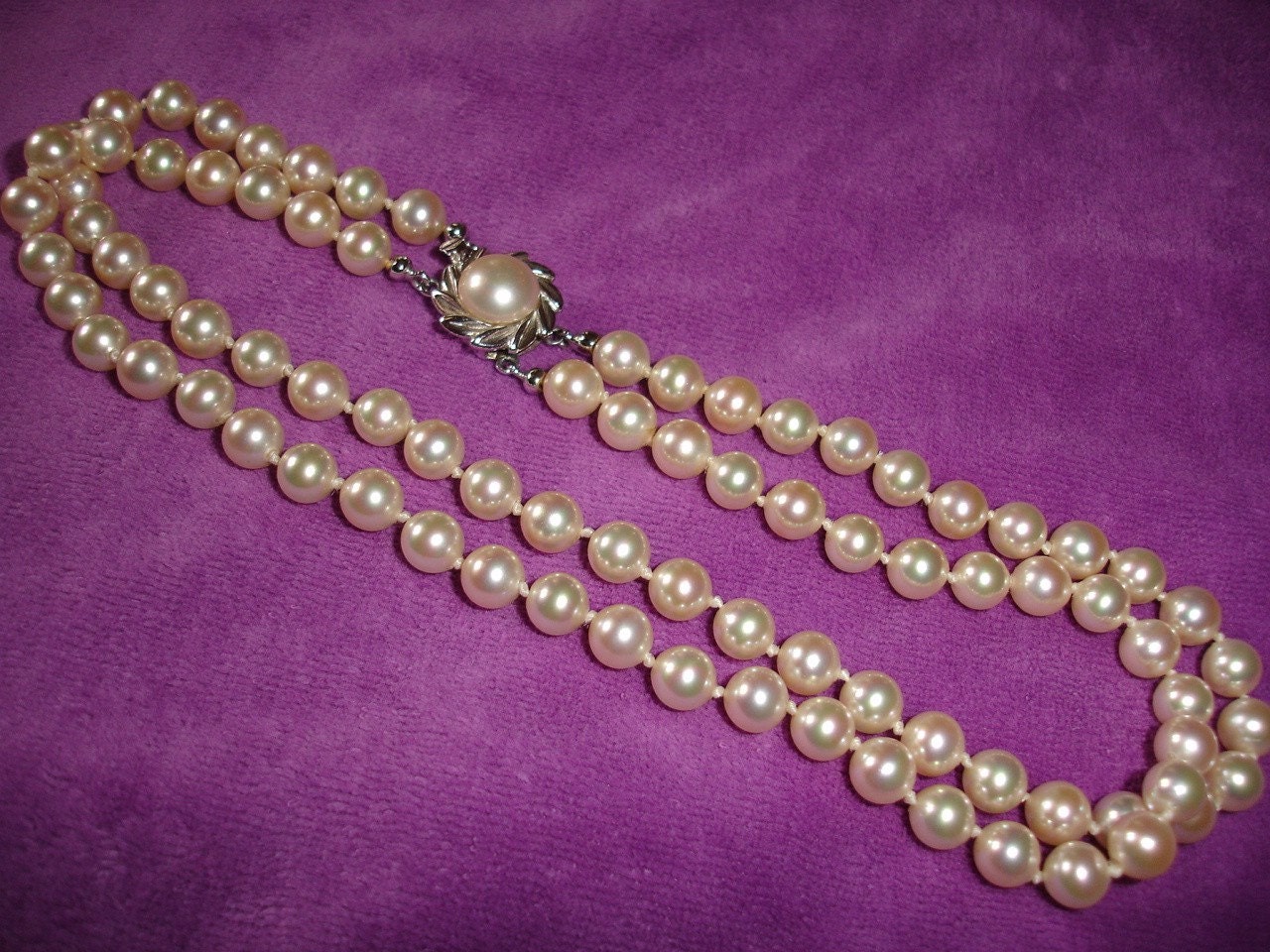Calling them organic because they contain organic matter (fish scales) is certainly a stretch.
The earlier Majorica strands were better imitations than the strands I've seen in the past few years; the current ones have a garish pseudo-orient. My mother has a strand from the early 1970s that she loves (partly for sentimental reasons as my grandmother gave it to her) and I wore a strand of Majoricas at my wedding. For our first Christmas after we were married, my husband gave me a 7mm, 30 inch white strand of Majoricas that I still enjoy wearing occasionally.
It's true that you can get a very nice freshwater strand now for less than Majoricas cost, but before the Chinese started turning out round CFWP, Majorica imitation pearls were a relatively good fashion alternative to Akoyas. As far as imitations go, they are very well made, with 30-40 layers of essence d'orient. I recall looking for an Akoya strand at our local mall stores back in the mid-90s. I wore my Majoricas for comparison. The stores all had poor quality, thin-nacre Akoyas with little luster selling at over $1000 (they were not selling round freshwaters in those days), and my Majorica fakes actually looked better than those real Akoyas when laid side by side. Only Michael jewelers had an Akoya strand that looked better than my fakes. After that discouraging trip, I decided to hold off on buying genuine pearls.
But now that the high quality freshies are around, it no longer makes sense to buy Majoricas. However, if one likes vintage costume jewelry, the strands on eBay can be fun to own if they were cared for well, but remember that imitation pearls can be damaged by the use of perfume and hair sprays too, and many of these older strands don't have their original luster (spoken from experience.)

